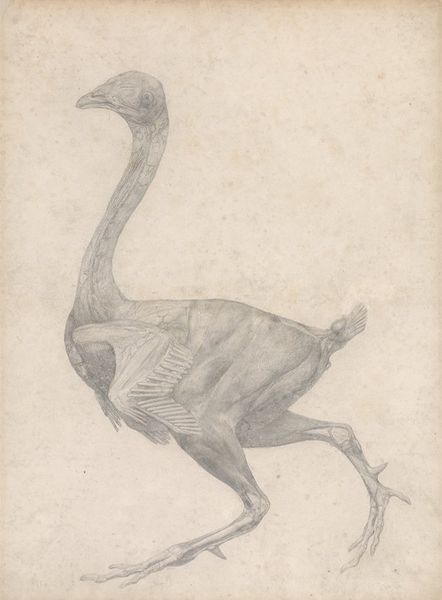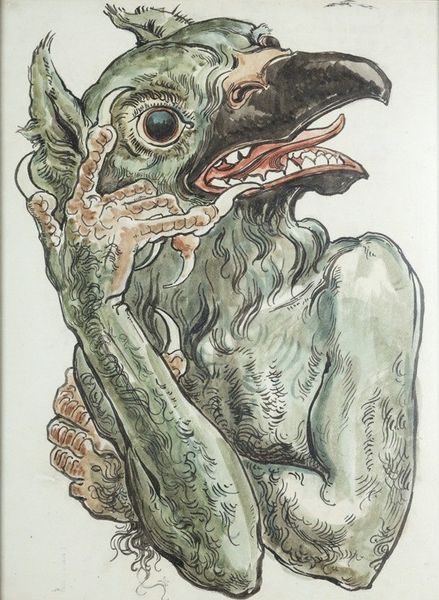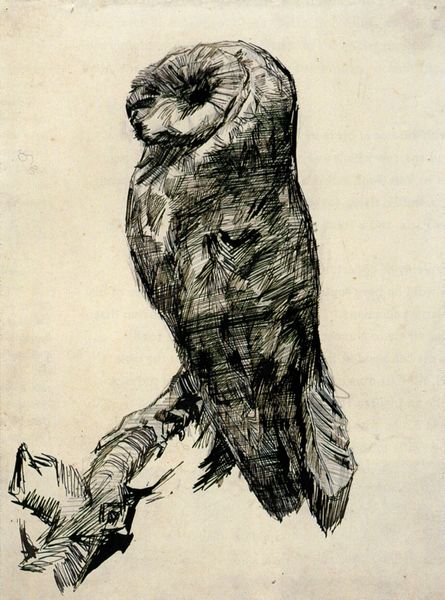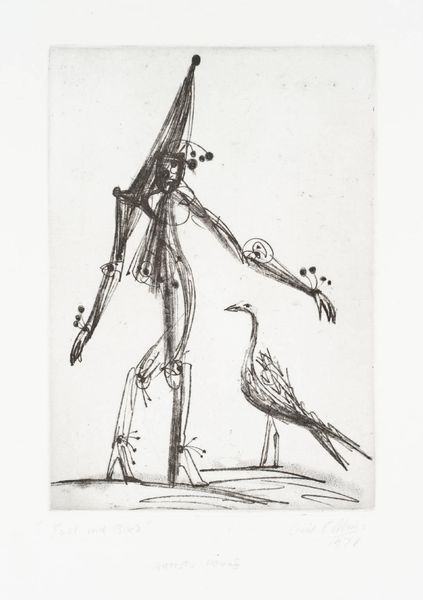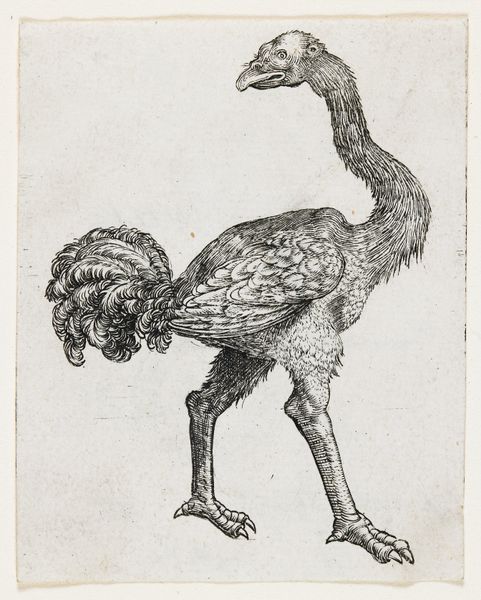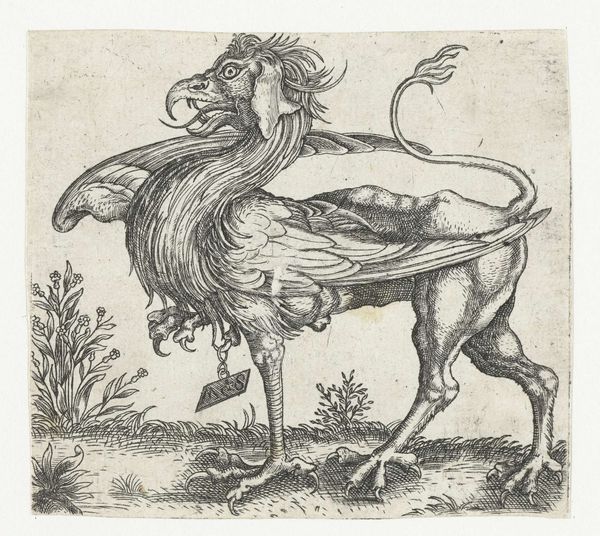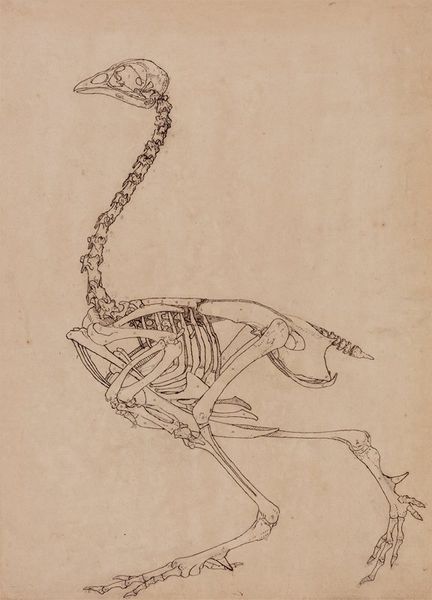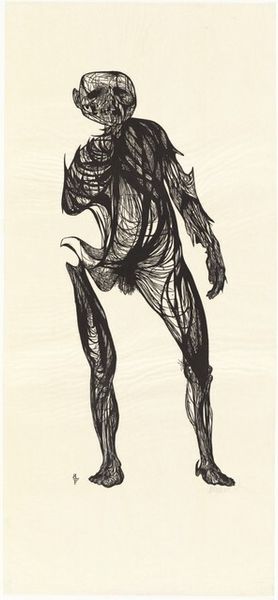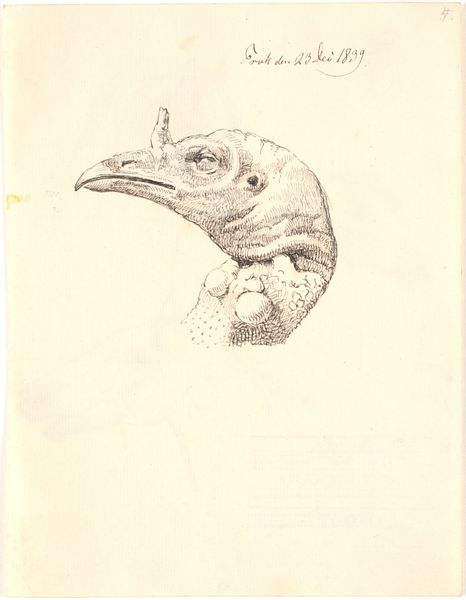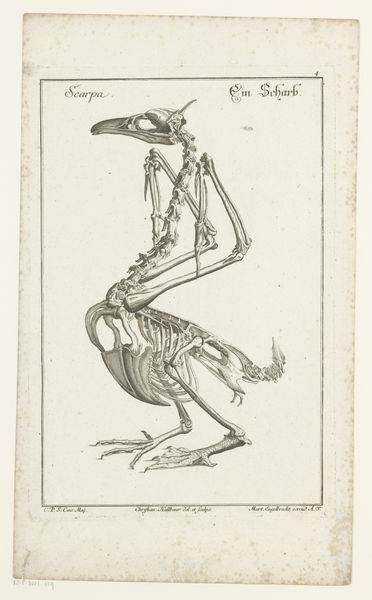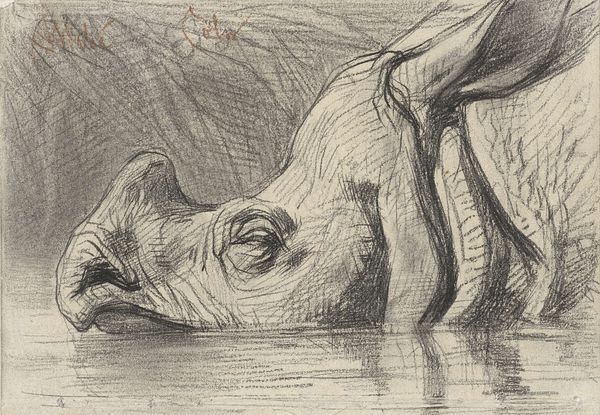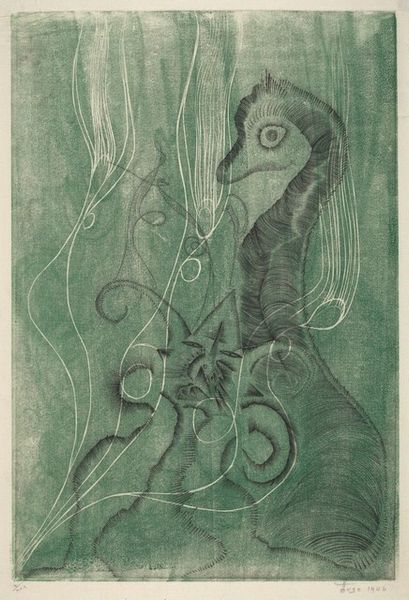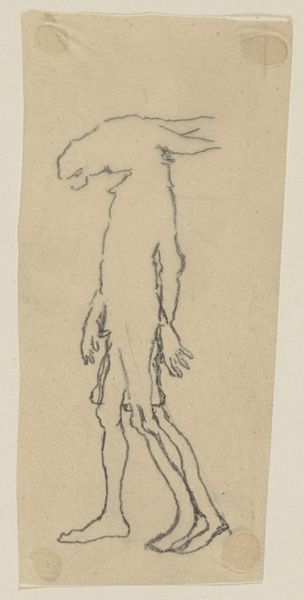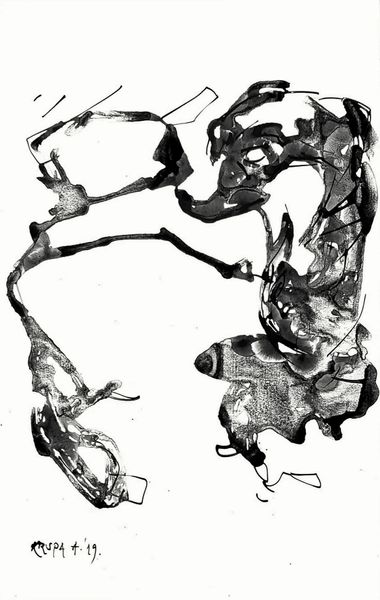
Study of a Fowl, Lateral View, with skin and underlying fascial layers removed, from 'A Comparative Anatomical Exposition of the Structure of the Human Body with that of a Tiger and a Common Fowl'
0:00
0:00
drawing, pencil
#
drawing
#
animal
#
pencil sketch
#
bird
#
pencil drawing
#
sketch
#
pencil
#
realism
Dimensions: 40.3 x 54 cm
Copyright: Public domain
Curator: Here we have a study by George Stubbs. It's titled 'Study of a Fowl, Lateral View, with skin and underlying fascial layers removed, from "A Comparative Anatomical Exposition of the Structure of the Human Body with that of a Tiger and a Common Fowl." Quite a mouthful, isn't it? It's a drawing done in pencil. Editor: It’s... intense. Stark, almost. The anatomical detail against the blank background really brings the reality of animal structure to the forefront. A bit unsettling. Curator: Precisely! Stubbs was known for his anatomical accuracy, driven by a desire to truly understand and represent animal form. This isn't just a picture of a bird; it's an investigation into its very being, aligning with the enlightenment ideals of observation and categorisation. Think of the project itself--to understand human form through comparison! Editor: The removal of the skin transforms the bird from something familiar into something alien, almost monstrous. But there is an elegance in it still. Anatomical studies and memento mori often walk that line of grotesque appeal, I suppose. There is a rich tradition of symbolism surrounding birds. Do you see any intentional placement of cultural association with this rendering, given Stubbs’ project and his social landscape? Curator: It makes you wonder about access and scientific endeavor, who got to study bodies in the enlightenment, whose bodies got represented and whose were conspicuously absent in these comparative projects. And what social, ethical and political context framed this type of “objective” scientific view of bodies? How were the naturalised hierarchies further concretised through art? Editor: Good point. It challenges the presumed objectivity. This pencil drawing holds layers of social implications. In visual representation, what do we gain, what do we lose, in exposing layers otherwise obscured? Curator: Exactly. Stubbs’ drawing shows an artistic interpretation interwoven with prevailing societal values. It reminds us of art's role in reflecting and often reinforcing cultural power dynamics. The seemingly objective is in fact politically inscribed. Editor: Thank you, that was truly eye opening. I now understand a great deal more than what I did before.
Comments
No comments
Be the first to comment and join the conversation on the ultimate creative platform.
